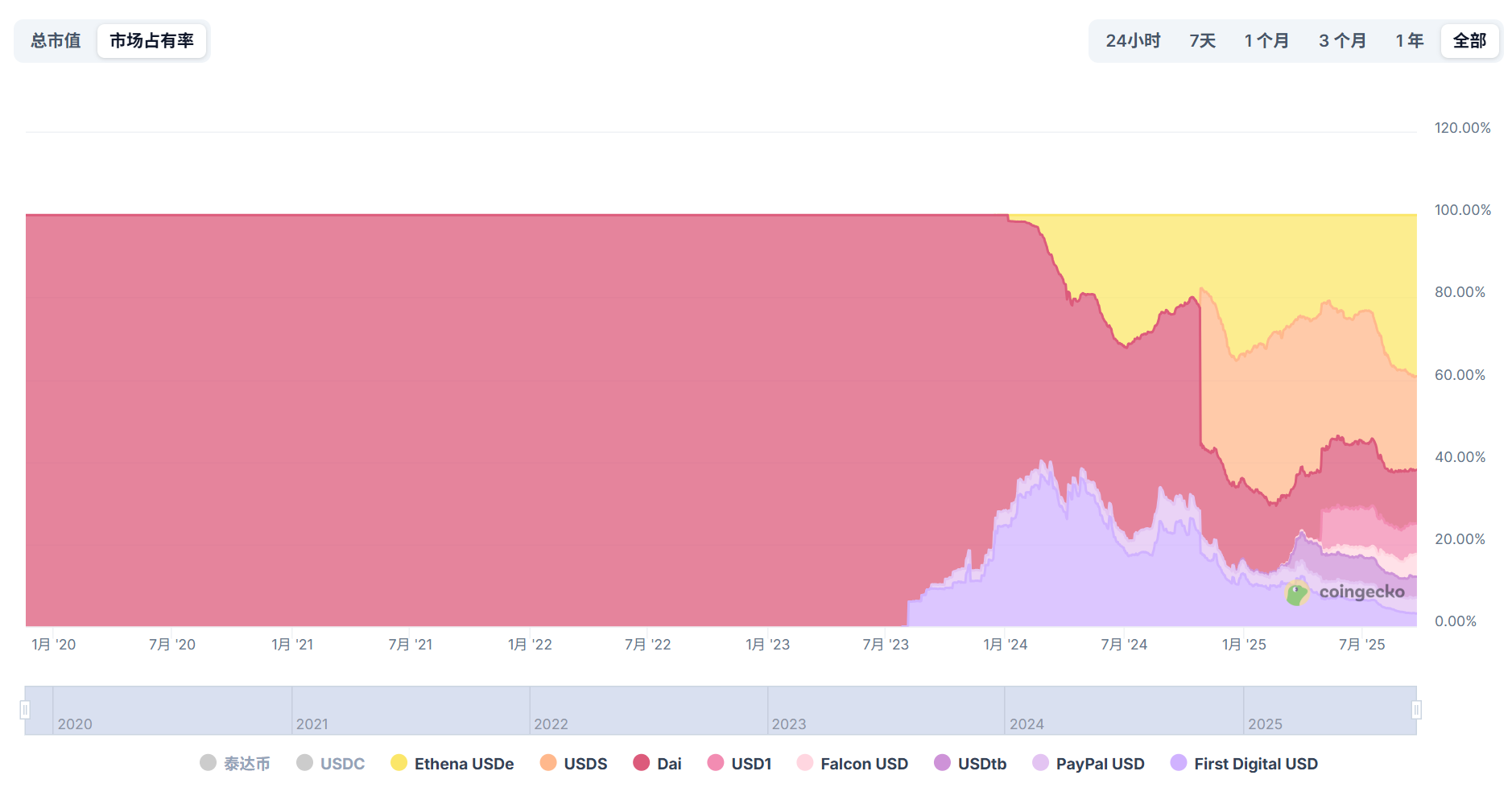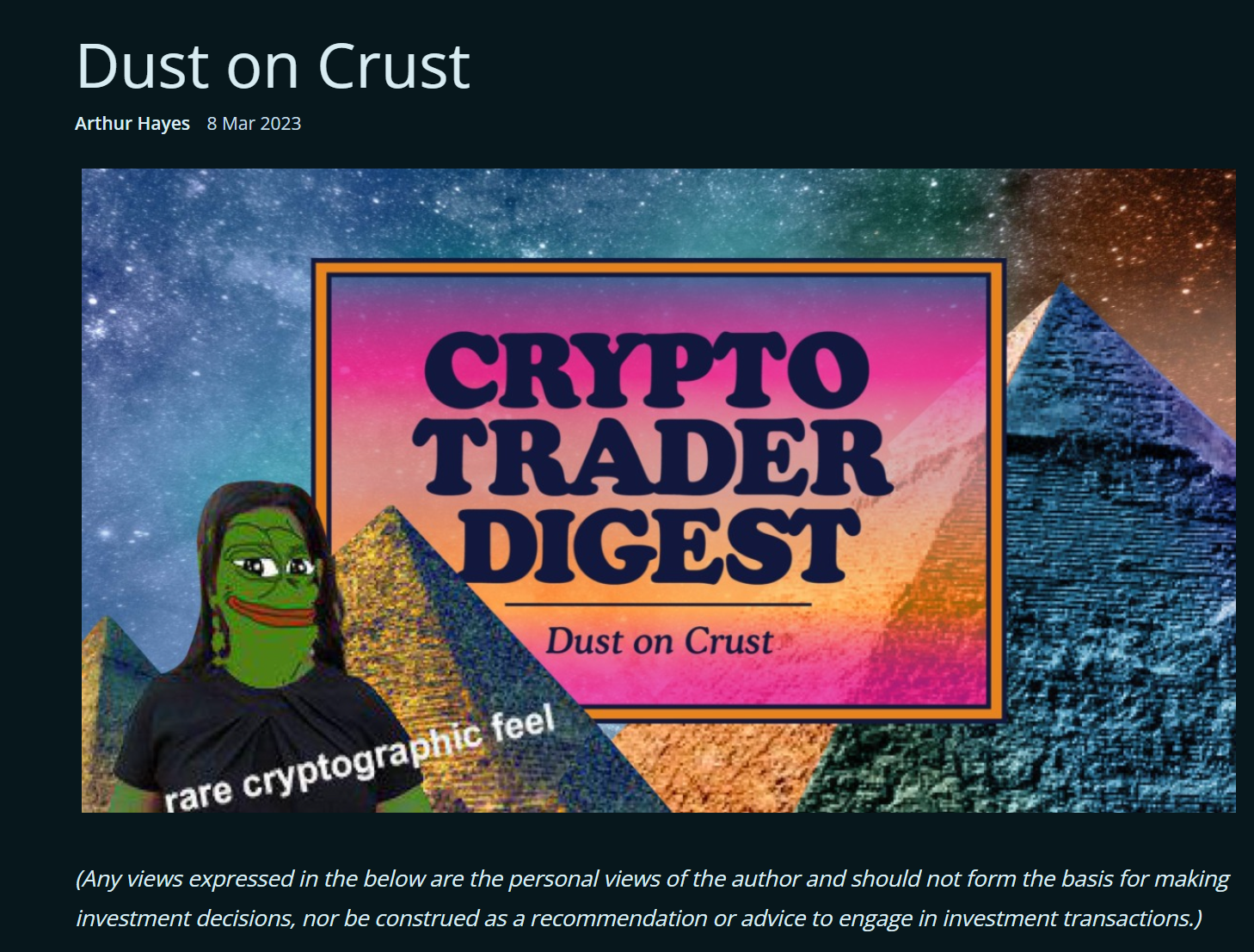USDe Soars? Deconstructing the Satoshi Dollar's 14 Billion-Dollar Value
- 核心观点:USDe凭借高收益模式跃居稳定币市场第三。
- 关键要素:
- 流通量超140亿美元,占非头部市场40%。
- Delta中性策略叠加资金费率创造高收益。
- 依赖正资金费率与CEX托管存潜在风险。
- 市场影响:冲击传统稳定币格局,推动收益型产品创新。
- 时效性标注:中期影响
Which stablecoin do you think is the third?
There is almost no suspense that USDT and USDC occupy the first and second places, but the third place today is not DAI, FDUSD or TUSD, but a new face that has been launched less than two years ago - USDe.
According to Coingecko data, as of September 23, the circulating supply of USDe has exceeded 14 billion US dollars, second only to USDT and USDC, ranking third in the stablecoin market. What is more noteworthy is that if the size of USDT and USDC is excluded, USDe has almost occupied 40% of the market share of all other stablecoins, which has strongly squeezed the living space of old stablecoins.
What has enabled this up-and-coming cryptocurrency to achieve such rapid success? What are the underlying profitability and potential risks? As USDe rapidly rises, what new dynamics are brewing in the stablecoin market?

Source: Coingecko
From 0 to $14 billion, the "non-linear" rise of USDe
The stablecoin track has always been a lucrative super cake.
In a horizontal comparison, Tether, a leading player, is even more powerful than top CEX exchanges. According to Tether's Q2 2025 forensic report, Tether's total holdings of U.S. Treasury bonds exceeded $127 billion (an increase of approximately $8 billion from the first quarter). Its net profit in the second quarter totaled approximately $4.9 billion, and its total net profit for the first half of this year reached $5.7 billion.
It should be noted that Tether has only about 100 employees, and its profit margin and operational efficiency are astonishingly high. Compared with crypto trading platforms and Web 2 traditional financial giants, it is almost at least an order of magnitude lower!
However, not all players are sitting comfortably at this lucrative table. It can even be said that, with the exception of USDT, the performance of established stablecoins in recent years has been less than perfect:
- USDC was once decoupled from its anchor due to reserve risk during the 2023 banking crisis, causing a significant decline in volume and severe damage to its vitality. The impact has not yet completely subsided;
- After the transformation of MakerDAO, DAI gradually became “super USDC” and its volume also reached a bottleneck period;
- Although newcomers such as TUSD and FDUSD have seen short-term growth, they are unlikely to shake the overall situation.

Source: Ethena official website
It was against the backdrop of slowing growth and solidified models of traditional stablecoin giants that USDe emerged and embarked on a completely different "non-linear" growth curve.
Since its official launch in November 2023, USDe's total market capitalization has rapidly grown from 0 to US$14 billion in less than two years. It has only experienced two pullbacks during this period and has been able to quickly resume growth. Especially since July this year, it has nearly tripled from approximately US$5 billion in just about two months, and has been deeply integrated by many leading CEXs.
It can be said that in the long run, USDe's growth curve is almost unparalleled.
This almost counterintuitive growth curve is also inseparable from its well-known high-yield flywheel. When the competition in stablecoins entered the "stock game" stage, USDe's extremely high annualized yield, practical scenarios of trading margin and "Delta neutrality" story did help it quickly open up the incremental market and become the most controversial and most watched rising star.
Deconstructing USDe: Where does the high yield come from?
USDe's biggest impact on the stablecoin market is undoubtedly its high-yield attribute - users can obtain all the profits generated by the protocol by staking USDe into sUSDe.
Data from Ethena Labs' official website shows that as of the time of publication, sUSDe's annualized yield is still as high as 7.83%, and it had previously maintained above 20%. So what kind of stablecoin mechanism is USDe, and why does it have such a high annualized yield?
To understand USDe, we must first clarify the essential difference between it and the previously collapsed UST - UST is an uncollateralized algorithmic stablecoin, while USDe is a fully collateralized synthetic dollar that uses a "delta-neutral" strategy to maintain value stability. Behind this is actually the practical version of the "Satoshi Dollar" concept proposed by BitMEX founder Arthur Hayes in his article "Dust on Crust" as early as March 2023.

Source: BitMEX
In short, excluding the expected airdrop income, USDe's high income comes from two main sources:
- LSD staking income: The assets such as ETH or stETH deposited by users will generate stable staking income;
- Funding income from delta hedge positions: This is the bulk of the income, i.e. the funding earned from short perpetual futures positions opened on CEX;
The former is relatively stable, fluctuating around 3% to 4%, while the latter depends entirely on market sentiment. Therefore, the annualized return of USDe is also directly dependent on the funding rate of the entire network (market sentiment) to some extent. The key to the operation of this mechanism lies in the "Delta Neutral Strategy" - if an investment portfolio consists of related financial products and its value is not affected by small price fluctuations of the underlying assets, such an investment portfolio has the property of "Delta Neutral".
That is to say, USDe will form a "Delta neutral strategy" through equal amounts of spot ETH/BTC long positions and futures ETH/BTC short positions: the Delta value of the spot position is 1, and the Delta value of the futures short position is -1. After hedging the two, the Delta value is 0, which means "Delta neutrality" is achieved.
Simply put, when the USDe stablecoin module receives user funds and buys ETH/BTC, it will simultaneously open an equal amount of short positions, thereby maintaining the value of each USDe position through hedging, which ensures that the collateral position has no risk of liquidation loss.

Source: Ethena official website
Assuming the BTC price is $120,000, for example, if a user deposits 1 BTC, the USDe stablecoin module will simultaneously sell 1 futures BTC. After hedging the two, the Delta value of the total investment portfolio is 0:
- If BTC falls to $100,000: the spot position loses $20,000, but the futures short position makes a profit of $20,000, and the total value of the portfolio remains $120,000.
- If BTC rises to $140,000: the spot position makes a profit of $20,000, but the futures short position loses $20,000, and the total value of the portfolio remains $120,000.
In this way, the total value of the collateral is kept stable, while the short position can continue to earn funding rates. Historically, the funding rates in the crypto market have been positive most of the time (especially in bull markets), meaning that longs pay shorts.
Therefore, the combination of these two parts of income constitutes USDe's extremely attractive high APY.
Shadows beneath the halo: Potential risks and controversies of USDe
Although the USDe mechanism is ingeniously designed, its high returns are not entirely risk-free. The market's main concerns are concentrated on the following points.
The first is the funding rate risk. Since USDe's profit model is highly dependent on a positive funding rate, once the market turns into a bear market, the funding rate may be negative for a long time. At that time, short positions will not only have no income, but will have to pay fees. This will seriously erode USDe's yield and may even trigger the risk of decoupling.
The next risk is centralization and custody, because USDe's collateral and hedge positions are stored in centralized custodians and CEXs. Although they are relatively decentralized, they still face counterparty risks. Once problems occur in the exchange (such as bankruptcy or theft), it will directly threaten the security of USDe's assets.
Finally, there is liquidity and execution risk. After all, when the market is extremely volatile, Ethena needs to quickly adjust its huge spot and futures positions. At that time, market liquidity may dry up, resulting in huge transaction slippage, making the "Delta Neutral" strategy ineffective.
There is also a hidden risk, which is the decoupling of LSD collateral - if the liquid pledge tokens such as stETH used by Ethena are decoupled from ETH, its hedging effect will be greatly reduced, resulting in asset losses.
Overall, the rapid rise of USDe reflects the market's huge expectations for a "holy grail" of high-yield, high-capital-efficiency decentralized stablecoin against the backdrop of the decline of algorithmic stablecoins and the regulatory pressure faced by centralized stablecoins. And to be realistic, it has indeed created a new "synthetic dollar" paradigm.
But for users, while embracing its high returns, they also need to be aware of its unique risk model. This competition for the future core assets on the chain deserves our continued attention.



